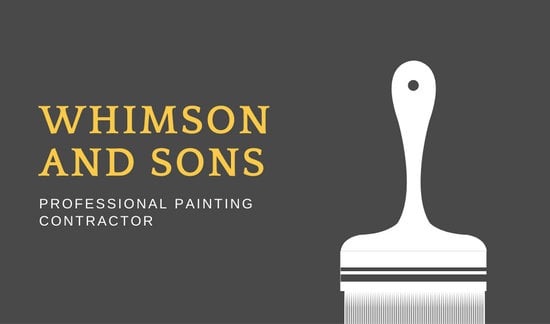Seasonal Factors In Business Outside Paint: Secret Insights You Need To Recognize
Seasonal Factors In Business Outside Paint: Secret Insights You Need To Recognize
Blog Article
Staff Writer-Fox Bagger
When you're planning a business outside paint task, seasonal variables can make or break your outcomes. You'll wish to take into consideration how temperature level and humidity impact paint application and drying out times. Picking the ideal period can ensure your paint sticks correctly and lasts longer. Yet which seasons are truly the most effective for this kind of work? Let's explore the crucial elements that can affect your project's success.
The Effect of Temperature on Paint Application
When you're intending an industrial external painting project, the temperature level can substantially impact just how well the paint sticks and dries.
Preferably, you intend to paint when temperature levels vary in between 50 ° F and 85 ° F. If it's also cold, the paint may not cure appropriately, leading to problems like peeling off or fracturing.
On the other hand, if it's as well warm, the paint can dry out as well promptly, protecting against correct attachment and causing an irregular finish.
You need to likewise take into consideration the time of day; morning or late afternoon provides cooler temperature levels, which can be much more beneficial.
Constantly check the manufacturer's suggestions for the specific paint you're making use of, as they commonly supply guidance on the suitable temperature level range for optimal outcomes.
Humidity and Its Result on Drying Times
Temperature isn't the only ecological element that influences your commercial exterior paint project; humidity plays a significant role also. High moisture levels can reduce drying out times considerably, affecting the overall top quality of your paint task.
When the air is saturated with wetness, the paint takes longer to cure, which can lead to concerns like inadequate bond and a higher risk of mildew growth. If you're painting on a specifically damp day, be gotten ready for extensive delay times between coats.
It's vital to keep track of neighborhood weather conditions and strategy accordingly. Ideally, go for painting the ceiling the same color as walls in between 40% and 70% for ideal drying out.
Maintaining these consider mind ensures your project stays on track and supplies a lasting surface.
Best Seasons for Commercial Outside Painting Projects
What's the most effective season for your commercial external painting jobs?
Spring and early autumn are typically your best options. During these seasons, temperatures are light, and humidity levels are often reduced, creating optimal conditions for paint application and drying.
Avoid summertime's intense heat, which can create paint to completely dry as well promptly, causing bad adhesion and finish. Likewise, wintertime's chilly temperature levels can prevent appropriate drying and curing, taking the chance of the long life of your paint work.
Go for days with temperature levels between 50 ° F and 85 ° F for optimum outcomes. Keep in mind to inspect the neighborhood weather report for rain, as wet problems can wreck your job.
Planning around mouse click the next web page ensures your painting task runs smoothly and lasts longer.
Final thought
Finally, intending your industrial exterior paint jobs around seasonal considerations can make a substantial difference in the outcome. By scheduling work during the excellent temperature levels and humidity levels, you'll make sure far better attachment and drying out times. Remember to keep an eye on regional weather report and select the correct time of year-- springtime and very early loss are your best choices. Taking these actions will aid you achieve a sturdy and expert coating that lasts.
